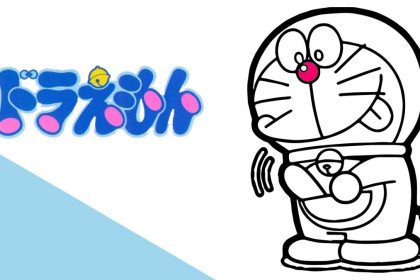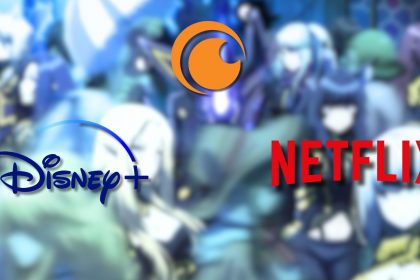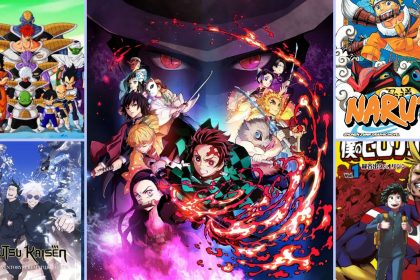In today’s rapidly evolving educational landscape, teachers are continually seeking innovative and engaging methods to captivate their students’ attention and enhance their learning experience. One such method that has gained significant popularity is the incorporation of anime and manga into schools and universities. Anime refers to the animated Japanese television shows and movies, while manga refers to Japanese comic books and graphic novels. These forms of media have long been beloved by people of all ages around the world, and their unique qualities make them valuable educational tools. In this article, we will explore the benefits of anime and manga in education, discuss how they can be effectively incorporated into the classroom, address common challenges and criticisms, and highlight success stories and case studies. So, let’s embark on this exciting journey and discover the educational potential of anime and manga!
Understanding Anime and Manga
Before delving into the educational aspects, it is essential to have a basic understanding of anime and manga. Anime, derived from the word “animation,” encompasses a wide range of genres, including fantasy, science fiction, romance, action, and adventure. It features vibrant and stylized visuals, imaginative storytelling, and often explores complex themes and narratives. Manga, on the other hand, refers to the Japanese comic books and graphic novels that serve as the source material for many anime adaptations. Manga utilizes a unique reading format, where the panels flow from right to left, and it covers a diverse array of genres and subjects. Both anime and manga are deeply ingrained in Japanese culture and have a massive global following.
The Rise of Anime and Manga in Popularity
Over the past few decades, anime and manga have experienced an unprecedented rise in popularity worldwide. What was once considered a niche interest has now become a global phenomenon. This surge in popularity can be attributed to several factors. Firstly, the accessibility and availability of anime and manga have significantly increased through online streaming platforms and digital publications. This accessibility has allowed fans from different parts of the world to discover and engage with a vast array of content. Additionally, the unique storytelling and art styles of anime and manga have resonated with people from diverse backgrounds, transcending cultural and linguistic boundaries. Moreover, the widespread recognition of iconic anime series and manga franchises, such as “Dragon Ball,” “Naruto,” and “One Piece,” has contributed to the mainstream acceptance and integration of these mediums.
Further Readings: Cells at Work! Accuracy: Anime Meets Biology
The Benefits of Educational Anime and Manga Approach
Visual Learning and Engagement
Anime and manga offer a visually rich and captivating experience that can greatly enhance the learning process. The colorful and dynamic animation in anime and the expressive art styles in manga can capture students’ attention and make complex concepts more accessible. Visual learners, in particular, can benefit from the vivid illustrations and animated visuals, as they provide a different mode of understanding compared to traditional textbooks. By incorporating anime and manga into lessons, teachers can create a visually stimulating environment that promotes active engagement and enhances comprehension.
Cultural and Historical Understanding
Anime and manga provide a unique window into Japanese culture, history, and traditions. Many anime and manga series are set in Japan or draw inspiration from Japanese folklore and mythology. By exploring these narratives, students can gain a deeper appreciation and understanding of Japanese society and its rich heritage. Furthermore, anime and manga often address social issues and historical events, offering a thought-provoking exploration of various themes. By analyzing these narratives, students can develop critical thinking skills and broaden their cultural horizons.
Language Learning and Literacy
One of the significant advantages of using anime and manga in education is their potential to enhance language learning and literacy skills. Since anime and manga are originally produced in Japanese, they provide an immersive and authentic context for language acquisition. Students can develop their listening and reading comprehension skills by engaging with the dialogue and subtitles in anime, as well as the text in manga. Additionally, the visual cues and context provided by the animated visuals or panels can aid in understanding the meaning of words and phrases. Anime and manga also expose students to colloquial language, cultural expressions, and various speech patterns, contributing to their overall language proficiency.
Ethical and Moral Lessons
Anime and manga often explore complex ethical and moral dilemmas, presenting characters who face difficult choices and consequences. These narratives provide valuable opportunities for students to engage in discussions and reflections on ethical issues. By analyzing the motivations and actions of characters, students can develop empathy, critical thinking skills, and a deeper understanding of ethical concepts. Anime and manga can serve as catalysts for meaningful conversations about topics such as friendship, courage, justice, and responsibility, fostering the development of students’ moral compass.
Incorporating Anime and Manga in the Classroom
Creating Lesson Plans and Activities
To effectively incorporate anime and manga into the classroom, teachers can design lesson plans and activities centered around these mediums. For example, teachers can select specific anime episodes or manga chapters that align with the curriculum and create corresponding discussion questions or writing prompts. Students can analyze the character development, themes, and narrative techniques employed in the selected anime or manga. Furthermore, teachers can encourage students to create their own manga or anime-inspired stories, promoting creativity and storytelling skills.
Promoting Critical Thinking and Analysis
Anime and manga offer ample opportunities for students to engage in critical thinking and analysis. Teachers can guide students to analyze the cultural, historical, and social contexts portrayed in anime and manga. They can explore the underlying messages and symbolism, encouraging students to think critically about the themes and values presented in these narratives. Additionally, students can compare and contrast different anime or manga adaptations of the same story, identifying variations in storytelling techniques and artistic styles. By fostering critical thinking skills, teachers can empower students to become active consumers and creators of media.
Fostering Creativity and Expression
Anime and manga are renowned for their imaginative storytelling and unique art styles. Making them excellent tools for fostering creativity and self-expression. Teachers can organize creative projects where students design their own anime or manga characters, develop storylines, and create illustrations or short animations. This process allows students to tap into their creativity, practice visual communication, and explore their own unique artistic styles. By embracing the creative aspects of anime and manga, teachers can cultivate a classroom environment that values self-expression and encourages students to think outside the box.
Challenges and Criticisms of Educational Anime Approach
Stereotypes and Misconceptions
One of the challenges associated with using anime and manga in education is the presence of stereotypes and misconceptions. Some people believe that anime and manga are solely meant for entertainment and lack educational value. However, as we have discussed, anime and manga offer numerous benefits in terms of visual learning, cultural understanding, language acquisition, and moral lessons. Educators must address these misconceptions and emphasize the educational potential of anime and manga.
Age-Appropriate Content
Another challenge is ensuring age-appropriate content selection. While anime and manga cater to audiences of different age groups, some series contain mature themes, violence, or explicit content. Teachers need to carefully curate the content they introduce to their students. Selecting age-appropriate anime and manga that align with the educational objectives and values of the institution. Additionally, involving parents and guardians in the selection process can help ensure that the content is suitable for the students’ age and maturity level.
Balancing Entertainment and Education
Finding the right balance between entertainment and education is crucial when incorporating anime and manga into the classroom. While these mediums are inherently entertaining, it is essential to align their usage with specific learning outcomes. Teachers should design activities and discussions that encourage critical thinking, analysis, and reflection. Ensuring that students engage with the educational aspects of anime and manga rather than solely focusing on the entertainment value.
Success Stories and Case Studies of Educational Anime Activities
Educational Anime and Manga Clubs and Organizations
Numerous schools and universities have witnessed the positive impact of anime and manga clubs and organizations. These clubs provide a platform for students to come together and explore their shared passion for anime and manga. Through club activities such as screenings, discussions, and conventions, students can deepen their understanding of the mediums, develop social connections, and engage in creative projects. Anime and manga clubs have proven to be valuable spaces for fostering a sense of community and promoting interdisciplinary learning.
Educational Anime within Academic Research and Studies
Academic researchers and scholars have also recognized the educational potential of anime and manga. Several studies have explored the cognitive, cultural, and linguistic benefits of incorporating anime and manga into educational settings. For example, research has shown that the visual nature of anime and manga enhances memory retention and comprehension. The combination of text and visuals stimulates multiple areas of the brain. Making it easier for students to retain information and make connections. Moreover, studies have indicated that the engagement and enjoyment derived from watching anime or reading manga can lead to increased motivation and interest in learning.
In terms of cultural understanding, anime and manga provide an authentic representation of Japanese culture, customs, and traditions. Researchers have found that exposure to anime and manga can improve students’ knowledge and appreciation of Japanese society, leading to increased cultural competency and global awareness. Additionally, studies have highlighted the positive impact of using anime and manga in language learning. Whether as supplementary materials or the main focus of language instruction, anime and manga offer a rich context for language acquisition, vocabulary expansion, and cultural immersion.
Conclusion of Educational Anime and Manga as Learning Tools
Anime and manga have emerged as powerful educational tools that can enhance the learning experience in schools and universities. Their visually engaging nature, cultural significance, language learning potential, and moral lessons make them valuable resources for educators. By effectively incorporating anime and manga into the classroom, teachers can promote visual learning, cultural understanding, critical thinking, and creativity among students. Despite challenges and misconceptions, the success stories and academic research surrounding anime and manga in education highlight their positive impact. As educators continue to explore innovative teaching methods, anime and manga offer an exciting avenue for fostering student engagement, cultural appreciation, and skill development. So, let’s embrace the educational potential of anime and manga and embark on a journey of learning and discovery!













